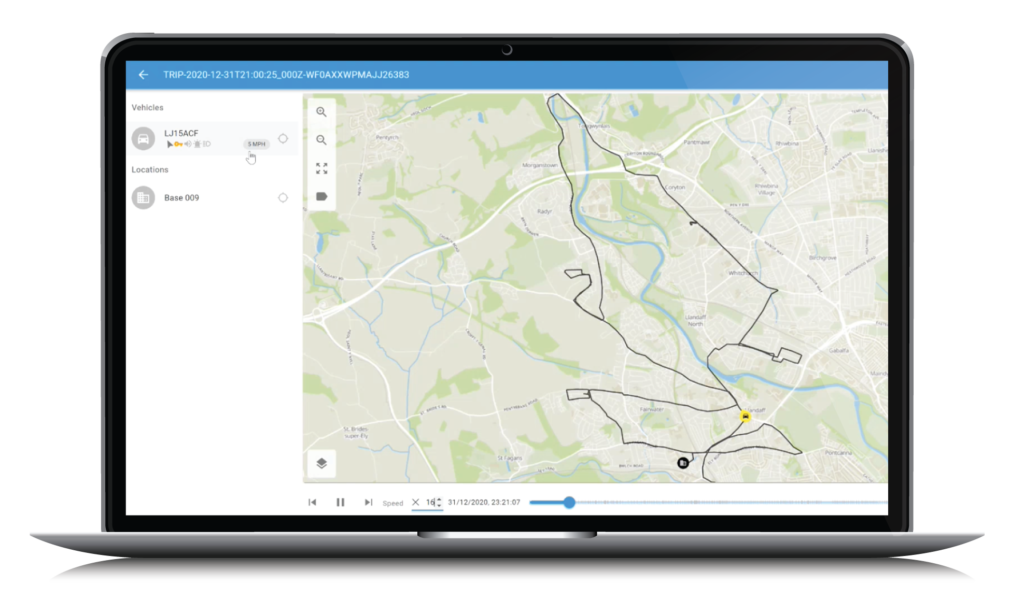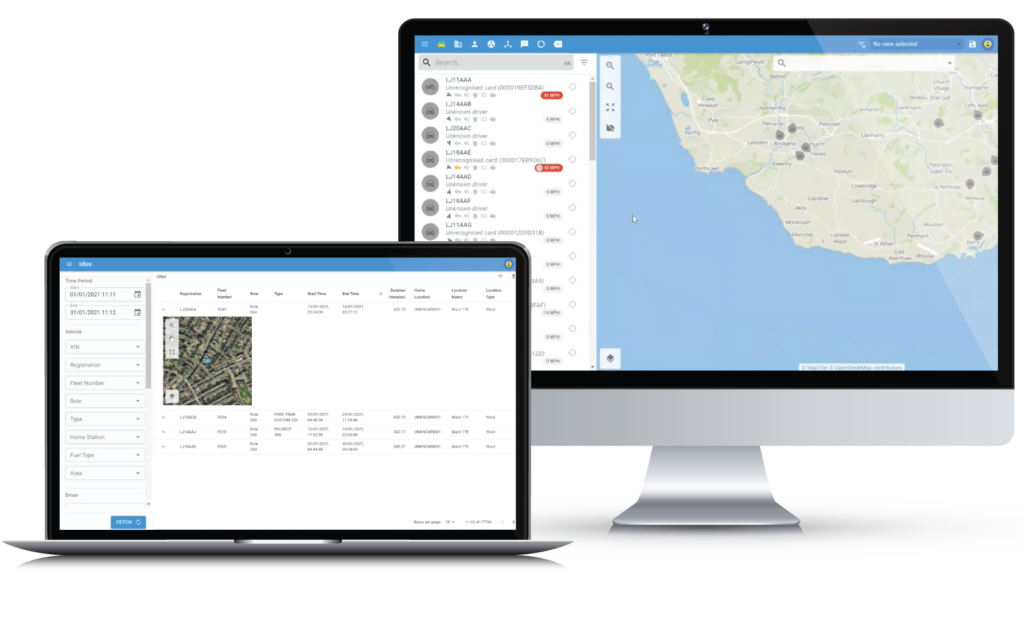Kent and Essex Police Case Study
Background
Kent and Essex Police have a joint transport operation which manages the whole fleet operation for both forces. The police forces have a large fleet of over 1,500 vehicles with various cars (diesel, unleaded, hybrid and electric), trucks and vans. Lightbulb Analytics data software is fitted to all vehicles across Kent and Essex Police. Originally this was a fleet initiative intended to improve fleet utilisation and support driver risk improvements; however, this software has quickly become key to driving efficiencies across both forces: in recycling assets, community engagement, officer productivity, reduction in operating costs and streamlining of working practices.
Due to the data transformation at Kent and Essex, the forces have been recognised for their operational efficiency by being shortlisted for four awards this year – Excellence in Fleet Safety, Compliance Fleet of the Year – more than 1,000 vehicles, Wellbeing, Diversity, and Inclusivity in Fleet and the Fleet Manager of the Year. Their success can be credited to the commitment to making data lead decisions and ensuring their fleets are using best practices.

Mission
For the Kent and Essex Police, the mission is simple: to make the counties a safe place for people to live, work, and visit. A key component to a safe community is improving efficiencies across the department. To achieve this mission, they needed a data platform to monitor and analyse their actions. Kent and Essex police installed Lightbulb Analytics fleet and resource management system, called iR3, in 2018. For Kent and Essex Police, being able to consolidate telematics data into meaningful reports has had a tremendous impact on operations. Through dashboards and reporting, they can drill down on the force, divisions, teams, and individuals. These reports allow for easy analysis and insight into how the fleet is being utilised and its link with operations so managers can see the effectiveness of their fleet and how it aligns with operations.
The real-time data analytics solution is divided into three key sections: Live vehicle tracking, historical journeys, and statistical reporting. These sections are accessible to authorised users, including staff in the control rooms, fleet department, and divisional SPOCs (Single Point of Contact). Both drivers and supervisors can access individual journey data so high driver standards can be achieved. These three sections of data were able to transform the force’s operations in many ways: fleet utilisation, sustainability, and cost savings.
Fleet Utilisation
In number terms, the fleet has reduced in size by 24 vehicles. In the last two years, both Forces have seen a significant uplift in police officers (approx. 500 per Force). To cater for the increase, telematics has been used to evaluate utilisation and where appropriate recycle fleet to other parts of the business. The Forces have recycled over 50 vehicles to meet evolving operational priorities using telematics data to evaluate utilisation.
Driver Behaviour
iR3’s data also helped the forces proactively in addressing risk management and driver behaviour. Since the implementation of IR3, there have been less reports of police vehicle incidents per year.

Further development last year using IR3’s Driver Behaviour feature has also seen “driver scores” being accessible to individual drivers, together with the development of bespoke dashboards, used as part of the driver risk initiatives. Drivers and their supervisors can see their individual driving scores and see how well they are doing when compared with their peers. The driver behaviour module takes into account harsh braking, cornering and acceleration as well as speed. The module has been configured for police driving so it takes into account response driving. Early indications show an improvement in driver scores.

Sustainability
Kent and Essex police are also leading the way in police sustainability. They have recognised that the reductions in CO2 are not just driving but related to all departments and often starts with the purchase of new assets.
All future fleet purchases consider hybrid and EV alternatives, recognising there is not an EV solution for all policing roles currently. However, from tracking and monitoring all assets, it is easy to analyse which models are performing best and which vehicles need to be replaced. Tools like IR3 which collect all this data help organise pooling arrangements and overcome fleet availability and grey fleet issues.
In 2020/21 the number of private user miles reduced by 1.3m or 30% (£637k). Whilst some reduction must be attributed to the COVID lockdown, it was noticeable that the majority of this mileage transferred to fleet, which has become more accessible due to pooling arrangements, made possible from analysing availability and usage data in IR3.
As well as looking to the future, IR3 operates in real-time – meaning there is immediate action to alerts. Wherever possible, the forces use telematics to deploy the closest assets to urgent calls. The better marshalling of resources has the potential to reduce unnecessary patrolling and ensures better use of officer time and vehicle utilisation.
Cost Savings
The police service has been subject to more than 10 years of financial austerity and Kent and Essex Transport Services are accredited with £5.3M savings achieved through collaboration, consolidation between forces, telematics, and collaborative procurement.
There is little more that can be driven out, although detailed cost control has enabled the benchmarking of vehicle operating costs with industry averages, (e.g., Astra marked-response vehicle 33ppm) notwithstanding operational exigencies. Further meaningful savings require reductions in mileage (demand), and reduced fleet quality (cheaper and/or smaller vehicles), both of which are counterintuitive to current policing demands.
Other cost-cutting initiatives based on data include:

-
Implemented a collection and delivery service for maintenance and repair utilising car transporters; net saving of £574k (police officer time) and 298k miles which in turn reduced CO2 emissions.
-
Initiatives to map journeys and direct refuelling to discounted sites saving £300K last year.
-
Consideration of non-manufacturer parts for non-safety-related components without compromising on quality and standard saved £22k last year.
-
Grey fleet was diverted to available fleet resources which saved £600k last year. (COVID lockdown year)
Summary of iR3 Features Used by Kent and Essex Police:
Kent and Essex Police utilise Lightbulb Analytics’ iR3 solution for their operational policing, which helps the organisation:
- Improve driver behaviour — Driver behaviour scores are published based on driving style, with the aim to encourage self-improvement and identify opportunities for increased training
- Engage the community — Heat-mapping technology and target resourcing helps local supervisors better support and engage their communities
Reduce fleet operating costs — Through savings in fuel, parts, tyres, and collision repairs, the department has saved £359k since implementing the iR3 solution

- Improve officer productivity — With telematics, drivers no longer need to record mileage details in logbooks, saving approximately 3000 hours of officer time
- Streamline working practices — Through technology, the department can provide quicker, more transparent investigations into driver issues based on verifiable evidence
Want more information?
To learn more about the real-time data analytics solution mentioned in this case study, contact us now.
Contact Us